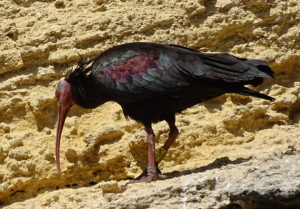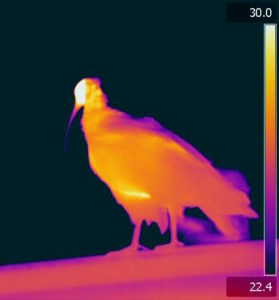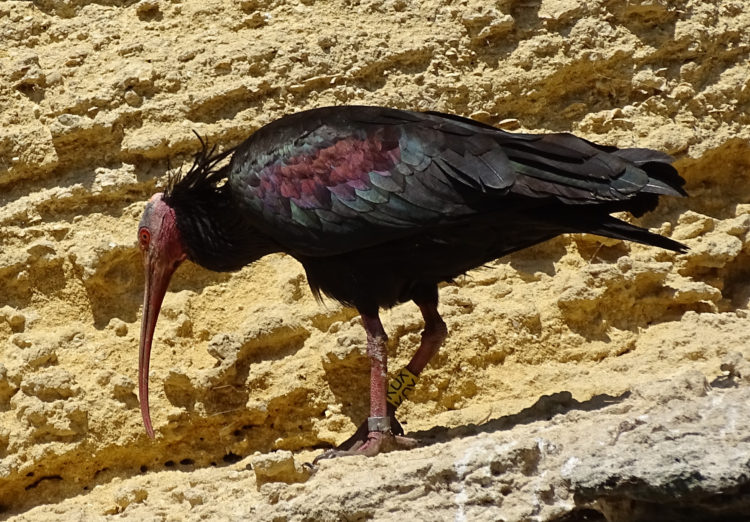Many Ibis species have bare heads. While it is commonly thought that this somehow helps them with keeping cool, studies to demonstrate this have been absent. Until now.

Ismael Galván at the Department of Evolutionary Ecology, Doñana Biological Station in Spain, and his colleagues, decided to put this hypothesis to test. For this, they used thermal images that allowed them to measure surface temperatures of the head, the bill and the body of Northern Bald Ibis at different ambient temperatures. In Ismael’s words “This absence of previous information has been challenging as well as motivating, because testing this idea can open new possibilities to understand why animals are as they are regarding pigmentation, and other attributes that may represent adaptations to counteract the limitations of being dark and living in hot environments.”

The results were fascinating. While the surface temperatures of the bill and body was similar to ambient temperatures, head temperatures were much higher. This higher temperature can be seen as a lighter colour in the thermal images! Ismael says “To my knowledge, this is the first study using thermal imaging to investigate the thermoregulatory constraints imposed by dark pigmentation, and probably also the first one using large zoom lens for thermography in an ecological context.”

Incredibly, the team also noticed that Ibis heads changed red colour intensity as surface temperature increased. This is evidence that the birds were actively controlling blood flow to their heads. However, it is not clear if the birds were also able to control the heat exchange using the bare patches. The most important finding, says Ismael is that the study “supports the hypothesis that naked, highly vascularized head skin areas have evolved in birds with dark plumage pigmentation to help dissipate heat.”
Clearly, in Ibis with dark plumages, being bald is not all it is made out to be.
(The study is freely downloadable from the open-access journal Frontiers in Zoology.)

